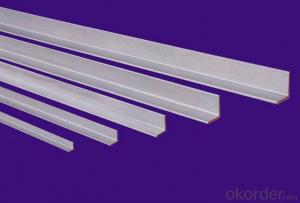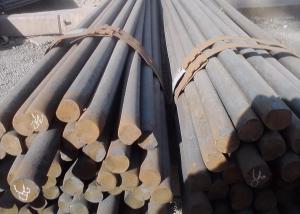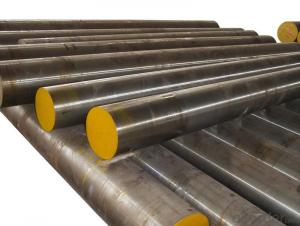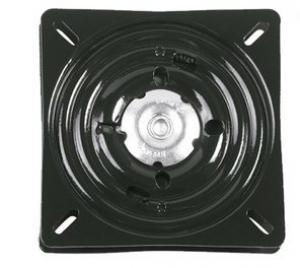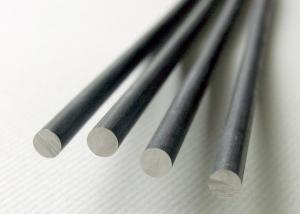Low Cost_Various High Quality Equal / Unequal Steel Angle_Angle Steel_Angle Bars
- Loading Port:
- Tianjin
- Payment Terms:
- TT OR LC
- Min Order Qty:
- 3 m.t.
- Supply Capability:
- 10000 m.t./month
OKorder Service Pledge
OKorder Financial Service
You Might Also Like
Item specifice
Low Cost_Various High Quality Equal / Unequal Steel Angle_Angle Steel_Angle Bars
Detailed Informaion
Name | Equal/Unequal Angle Steel Bar |
Shape | Equal/Unequal Angle |
Standard | GB/ASTM/SAE/AISI/DIN/JIS/EN/BS |
Surface Treatment: | Black/Peeling/Polished/Machined |
Delivery Condition: | Hot Rolled or Forged/Peeled or Black Surface |
Test | SGS/UT 100% Elements Testing |
Certificate: | ISO/Mill Certificate |
Service: | 24 hours online service / |
more than 20 years trading and manufacture | |
Quality Assurance: | the third party inspection, such as SGS, BV, TUV…etc. is acceptable |
Packaging Details: | Seaworthy Packaging or as per customer's packing instruction |
Quick Details
Standard:AISI,ASTM,BS,GB,JIS,EN
Size:45*30*4-200*125*18
Length: 6-16m
Technique: hot rolled
Grade:SS400, ST37-2, A36, S235JRG1, Q235, Q345 etc.
Type:EqualCertification:SGS,ISO
Inspection:accept BV SGS inspect
Specification
Specification | Weight | Specification | Weight |
Leg length*leg length*thickness |
| Leg length*leg length*thickness | (kg/m) |
(mm) | (kg/m) | (mm) |
|
25*25*3 | 1.124 | 90*90*8 | 10.946 |
25*25*4 | 1.459 | 90*90*10 | 13.476 |
30*30*3 | 1.373 | 100*100*6 | 9.366 |
30*30*4 | 1.786 | 100*100*7 | 10.83 |
40*40*3 | 1.852 | 100*100*8 | 12.276 |
40*40*4 | 2.422 | 100*100*10 | 15.12 |
40*40*5 | 2.976 | 100*100*12 | 17.898 |
45*45*3 | 2.088 | 110*110*7 | 11.928 |
45*45*4 | 2.736 | 110*110*8 | 13.532 |
45*45*5 | 3.369 | 110*110*10 | 16.69 |
50*50*3 | 2.332 | 110*110*12 | 19.782 |
50*50*4 | 3.059 | 125*125*8 | 15.504 |
50*50*5 | 3.77 | 125*125*10 | 19.133 |
50*50*6 | 4.465 | 125*125*12 | 22.696 |
63*63*5 | 4.822 | 125*125*14 | 26.193 |
63*63*6 | 5.721 | 140*140*10 | 21.488 |
63*63*8 | 7.469 | 140*140*12 | 25.522 |
70*70*5 | 5.397 | 140*140*14 | 29.49 |
70*70*6 | 6.406 | 160*160*10 | 24.729 |
70*70*7 | 7.398 | 160*160*12 | 29.391 |
70*70*8 | 8.373 | 160*160*14 | 33.987 |
75*75*5 | 5.818 | 160*160*16 | 38.518 |
75*75*6 | 6.905 | 180*180*12 | 33.159 |
75*75*7 | 7.976 | 180*180*14 | 38.383 |
75*75*8 | 9.03 | 180*180*16 | 43.542 |
75*75*10 | 11.089 | 180*180*18 | 48.634 |
80*80*6 | 7.376 | 200*200*14 | 42.894 |
80*80*7 | 8.525 | 200*200*16 | 48.68 |
80*80*8 | 9.658 | 200*200*18 | 54.401 |
80*80*10 | 11.874 | 200*200*20 | 60.056 |
90*90*6 | 8.35 | 200*200*24 | 71.168 |
90*90*7 | 9.656 |
|
|
Company Introduction
CNBM International Corporation is the most import and export platform of CNBM group(China National Building Material Group Corporation) ,which is a state-owned enterprise, ranked in 270th of Fortune Global 500 in 2015.
With its advantages, CNBM International are mainly concentrate on Cement, Glass, Iron and Steel, Ceramics industries and devotes herself for supplying high quality series of refractories as well as technical consultancies and logistics solution.
Packaging & Delivery
Packaging Detail | Sea worthy packing /as per customer's packing instruction |
Delivery Detail | 15 ~ 40 days after receiving the deposit |
Product Show
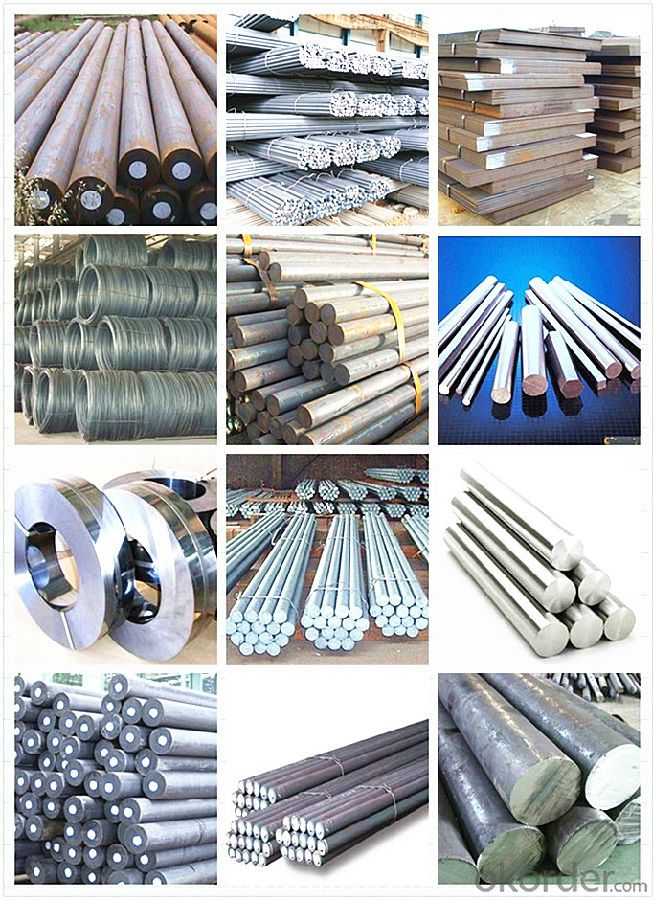
FAQ
Are you a trading company or manufacturer? | Manufacturer |
What’s the MOQ? | 3 metric ton |
What’s your delivery time? | 15-35 days after downpayment received |
Do you Accept OEM service? | Yes |
what’s your delivery terms? | FOB/CFR/CIF |
What's the Payment Terms? | 30% as deposit,70% before shipment by T/T |
Western Union acceptable for small amount. | |
L/C acceptable for large amount. | |
Scrow ,Paybal,Alipay are also ok | |
Why choose us? | Chose happens because of quality, then price, We can give you both. |
Additionally, we can also offer professional products inquiry, products knowledge train (for agents), smooth goods delivery, excellent customer solution proposals. | |
What's your available port of Shipment? | Main Port, China |
What’s your featured services? | Our service formula: good quality+ good price+ good service=customer's trust |
Where are your Market? | Covering more than 160 countries in the world |
- Q:How is special steel used in the production of conveyor belts?
- To improve the durability, strength, and overall performance of conveyor belts, special steel is utilized during their production. Conveyor belts are commonly employed in industries like mining, manufacturing, food processing, and logistics for the transportation of materials and goods. These belts face various challenging conditions, including heavy loads, high temperatures, and abrasive materials. To ensure the longevity and reliability of conveyor belts, specific parts are constructed using special steel alloys such as stainless steel or heat-resistant steel. For instance, stainless steel is frequently used in wire mesh belts to prevent corrosion and rust, especially when the conveyor belt is exposed to moisture or chemicals. This safeguards the smooth and efficient movement of materials, preventing contamination. Moreover, special steel is incorporated in the manufacturing of belt fasteners, hinges, and other connecting components. These parts must endure substantial tension, heat, and wear, making standard steel inadequate in terms of strength and durability. Special steel alloys offer superior strength, high temperature resistance, and improved wear resistance, ensuring the reliable functioning of conveyor belts even under demanding conditions. Additionally, in applications where conveyor belts are subjected to extreme temperatures, such as steel mills or foundries, special heat-resistant steel is utilized. This type of steel can withstand intense heat without deformation or loss of strength, enabling the conveyor belt to operate safely and efficiently in such extreme environments. In conclusion, special steel plays a crucial role in enhancing the durability, strength, and ability of conveyor belts to withstand challenging conditions. Its utilization in wire mesh belts, fasteners, hinges, and heat-resistant components ensures the longevity and reliability of conveyor belts across diverse industries.
- Q:What are the common challenges in machining titanium alloys?
- Successful and efficient results in machining titanium alloys require addressing several common challenges. One primary challenge is the inherent strength and hardness of the material. Titanium alloys are renowned for their excellent strength-to-weight ratio, making them ideal for various applications. However, this same strength makes them difficult to machine. The high strength of titanium alloys increases the cutting forces needed during machining, resulting in faster tool wear and reduced tool life. This necessitates the use of robust cutting tools made from carbide or ceramic, capable of withstanding demanding conditions and maintaining cutting performance. Another challenge in machining titanium alloys is their poor thermal conductivity. This characteristic leads to rapid heat buildup during cutting, causing localized high temperatures. These high temperatures can cause thermal damage to both the cutting tool and the workpiece, reducing dimensional accuracy and surface finish. To overcome this challenge, implementing effective cooling and lubrication techniques, such as using coolant or high-pressure air, is crucial to dissipate heat and prevent overheating. Furthermore, machining titanium alloys often results in the generation of built-up edge (BUE). BUE refers to the accumulation of workpiece material on the cutting tool, leading to poor chip evacuation, increased cutting forces, and surface finish issues. To mitigate BUE formation, it is recommended to use appropriate cutting speeds and feed rates, as well as cutting fluids that aid in chip evacuation and prevent material adhesion on the tool. Additionally, titanium alloys react strongly with oxygen, causing the formation of a stubborn oxide layer on the surface during machining. This oxide layer can cause tool chipping and premature wear. To combat this, it is necessary to employ suitable cutting speeds and feeds that efficiently remove material while minimizing prolonged exposure to the reactive nature of titanium alloys. Lastly, the low thermal expansion coefficient of titanium alloys can result in workpiece distortion and dimensional inaccuracies. To address this challenge, it is important to ensure proper fixturing and clamping techniques that minimize workpiece movement during machining. In conclusion, machining titanium alloys presents challenges such as high cutting forces, poor thermal conductivity, built-up edge formation, reactive oxide layer, and workpiece distortion. These challenges can be overcome by using appropriate cutting tools, effective cooling and lubrication techniques, proper cutting parameters, and careful workpiece handling.
- Q:What are the main factors affecting the formability of special steel?
- Several factors influence the formability of special steel, similar to other types of steel. These factors encompass the composition, microstructure, mechanical properties, temperature, and strain rate of the steel. The composition of special steel plays a vital role in determining its formability. The presence of alloying elements, such as chromium, nickel, molybdenum, and vanadium, can significantly impact the steel's ability to be shaped. These elements have the power to modify the steel's strength, ductility, and resistance to deformation. Another crucial factor influencing the formability of special steel is its microstructure. Fine-grained steels generally exhibit superior formability compared to coarse-grained steels. Additionally, the existence of non-metallic inclusions, like sulfides and oxides, can act as stress concentrators and promote crack formation, thereby influencing formability. The mechanical properties of special steel, including yield strength, tensile strength, and elongation, directly affect its formability. Steels with higher yield strength typically pose greater difficulty in shaping as they require more force for deformation. However, steels with high elongation can undergo more significant plastic deformation before failure, making them more formable. Temperature is also a critical factor impacting the formability of special steel. Elevated temperatures enhance the steel's ductility and make it easier to shape. This is due to the reduction in yield strength and increased movement of dislocations within the crystal structure. However, excessively high temperatures can lead to grain growth, negatively impacting formability. The strain rate, which refers to the rate of deformation applied to the steel, also influences formability. Higher strain rates can result in strain hardening, making the steel stronger but less formable. Conversely, lower strain rates allow for greater plastic deformation and improved formability. In conclusion, achieving the desired formability and shaping capabilities of special steel in various applications necessitates an understanding and optimization of its composition, microstructure, mechanical properties, temperature, and strain rate.
- Q:What are the different methods of surface passivation for special steel?
- There are several methods of surface passivation for special steel, including chemical passivation, electrochemical passivation, and mechanical passivation. Chemical passivation involves treating the surface with chemicals to remove impurities and create a protective layer. Electrochemical passivation uses an electric current to form a passive oxide layer on the surface. Mechanical passivation involves physical processes such as polishing or shot peening to remove contaminants and improve surface quality. These methods help enhance the corrosion resistance and durability of special steel surfaces.
- Q:What are the properties of magnetic alloy steel?
- Magnetic alloy steel possesses a combination of magnetic and mechanical properties that make it suitable for various applications. It exhibits high magnetic permeability, allowing it to attract and retain magnetic fields efficiently. Additionally, it boasts excellent strength, hardness, and wear resistance, making it ideal for manufacturing components in electrical transformers, motors, generators, and magnetic cores. Its properties can be further enhanced through heat treatment processes, ensuring optimal performance in magnetic applications.
- Q:What are the advantages of using special steel in the marine sector?
- Special steel has several advantages when used in the marine sector. Firstly, special steel is highly resistant to corrosion, which is crucial in a marine environment where constant exposure to saltwater can cause regular steel to rust and deteriorate. This corrosion resistance extends the lifespan of structures and components, reducing maintenance costs and increasing safety. Secondly, special steel offers excellent strength and toughness, making it suitable for the demanding conditions of the marine sector. It can withstand high stress, impact, and vibration, ensuring the integrity of the structures even in rough seas or extreme weather conditions. Moreover, special steel can be fabricated into various shapes and sizes, allowing for customization and optimization of marine components. This versatility enables the production of lightweight yet robust structures, improving fuel efficiency, and reducing the overall weight of the vessel. Additionally, special steel can withstand low temperatures, making it suitable for marine applications in colder climates or polar regions. It retains its mechanical properties even in sub-zero temperatures, ensuring the safety and reliability of marine operations. In summary, the advantages of using special steel in the marine sector include corrosion resistance, high strength and toughness, versatility in fabrication, and low-temperature resistance. These qualities enhance the durability, safety, and efficiency of marine structures and components.
- Q:What are the main factors affecting the machinability of special steel?
- The machinability of special steel, which refers to its ability to be easily cut, shaped, and formed, is influenced by several key factors. 1. Alloy Composition: The chemical composition of special steel plays a crucial role in its machinability. Elements such as carbon, chromium, nickel, and molybdenum can significantly affect the material's hardness, toughness, and cutting properties. Higher carbon content, for example, can increase the hardness of steel, making it more difficult to machine. 2. Hardness: The hardness of special steel is a critical factor in determining its machinability. Harder steels require more cutting force and generate more heat during machining, which can lead to increased tool wear and reduced efficiency. Softer steels, on the other hand, are generally easier to machine but may result in lower tool life. 3. Heat Treatment: The heat treatment process used on special steel can greatly impact its machinability. Heat treatments such as annealing, tempering, or quenching can alter the steel's microstructure and mechanical properties, affecting how it responds to cutting forces. Properly heat-treated steel can improve machinability by reducing hardness and increasing toughness. 4. Grain Size: The size and distribution of grains within the steel also affect its machinability. Fine-grained steel tends to have improved machinability compared to coarse-grained steel, as smaller grains offer more uniform cutting conditions and reduce the risk of tool damage. 5. Cutting Speed and Feed Rate: Machining parameters, including cutting speed and feed rate, directly impact the machinability of special steel. Higher cutting speeds can increase tool wear and generate excessive heat, affecting the surface finish and dimensional accuracy. Similarly, incorrect feed rates can cause chip formation problems, leading to poor machinability. 6. Cutting Tool Selection: The choice of cutting tool material and geometry is critical in achieving optimal machinability. Different tool materials, such as carbide or high-speed steel, have varying wear resistance and cutting properties. The tool geometry, including rake angle and clearance angle, also affects chip formation, cutting forces, and heat generation. 7. Lubrication and Cooling: Adequate lubrication and cooling during machining are vital to enhance machinability. Lubricants or coolants help reduce friction and heat, prolong tool life, and improve chip evacuation. They also prevent workpiece deformation and improve surface finish. Considering these factors, it is essential to carefully select the appropriate special steel grade, optimize machining parameters, and use suitable cutting tools and lubrication to achieve the desired machinability and maximize productivity.
- Q:What are the effects of different heat treatment processes on special steel?
- Special steel can undergo various heat treatment processes that significantly impact its properties and performance. These processes are designed to modify the steel's microstructure, influencing its hardness, strength, toughness, and other mechanical properties. One widely used heat treatment process is annealing, which entails heating the steel to a specific temperature and gradually cooling it. Annealing serves to alleviate internal stresses, enhance machinability, and improve the steel's ductility. Additionally, it refines the grain structure, promoting uniformity and decreasing the likelihood of cracks or defects. Another heat treatment process is quenching, which involves heating the steel to a high temperature and rapidly cooling it by immersing it in a quenching medium like oil or water. This process results in the formation of a hardened microstructure, augmenting the steel's hardness and resistance to wear. However, quenching can also render the steel brittle, which is why tempering is often performed subsequently. Tempering encompasses reheating the quenched steel to a lower temperature and maintaining it there for a specific duration. This process reduces the brittleness caused by quenching and enhances the steel's toughness and ductility. The resulting microstructure strikes a balance between hardness and toughness, rendering the steel suitable for applications necessitating both strength and impact resistance. Other heat treatment processes, such as normalizing and stress relieving, can also be employed to attain specific properties in special steel. Normalizing entails heating the steel above its critical point and allowing it to cool in still air. This process refines the grain structure and improves the steel's strength and machinability. Conversely, stress relieving aims to eliminate residual stresses from the steel by heating it below its critical point and gradually cooling it. In conclusion, the effects of various heat treatment processes on special steel are manifold. These processes can modify the steel's microstructure, leading to alterations in hardness, strength, toughness, and other mechanical properties. By selecting the appropriate heat treatment process, manufacturers can customize the steel's characteristics to meet specific requirements, ensuring optimal performance and longevity.
- Q:How does special steel contribute to reducing energy consumption?
- Special steel contributes to reducing energy consumption in several ways. Firstly, special steel is known for its high strength and durability, allowing it to be used in the construction of lightweight structures. This helps in reducing the overall weight of vehicles, machinery, and buildings, resulting in lower energy requirements for their operation and transportation. Additionally, special steel is used in the manufacturing of energy-efficient appliances and equipment, such as turbines and generators, which optimize energy conversion and minimize energy losses. Furthermore, special steel is often used in the production of renewable energy systems like wind turbines and solar panels, enabling the efficient generation of clean energy. Overall, the unique properties of special steel help in achieving energy efficiency goals and promoting sustainable practices.
- Q:How does special steel contribute to reducing product defects during manufacturing?
- Special steel contributes to reducing product defects during manufacturing by offering superior strength, durability, and corrosion resistance properties. This high-quality material ensures that the manufactured products have a lower risk of breakage, wear, or deformation, reducing the likelihood of defects. Additionally, special steel's precise composition and uniformity enable accurate machining and forming processes, resulting in more accurate and consistent product dimensions. Its resistance to heat and pressure also minimizes the occurrence of thermal expansion or distortion, further reducing defects during manufacturing.
1. Manufacturer Overview |
|
|---|---|
| Location | |
| Year Established | |
| Annual Output Value | |
| Main Markets | |
| Company Certifications | |
2. Manufacturer Certificates |
|
|---|---|
| a) Certification Name | |
| Range | |
| Reference | |
| Validity Period | |
3. Manufacturer Capability |
|
|---|---|
| a)Trade Capacity | |
| Nearest Port | |
| Export Percentage | |
| No.of Employees in Trade Department | |
| Language Spoken: | |
| b)Factory Information | |
| Factory Size: | |
| No. of Production Lines | |
| Contract Manufacturing | |
| Product Price Range | |
Send your message to us
Low Cost_Various High Quality Equal / Unequal Steel Angle_Angle Steel_Angle Bars
- Loading Port:
- Tianjin
- Payment Terms:
- TT OR LC
- Min Order Qty:
- 3 m.t.
- Supply Capability:
- 10000 m.t./month
OKorder Service Pledge
OKorder Financial Service
Similar products
New products
Hot products
Related keywords
